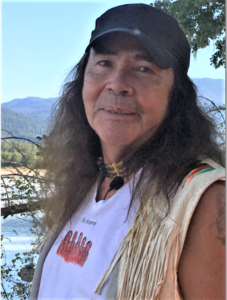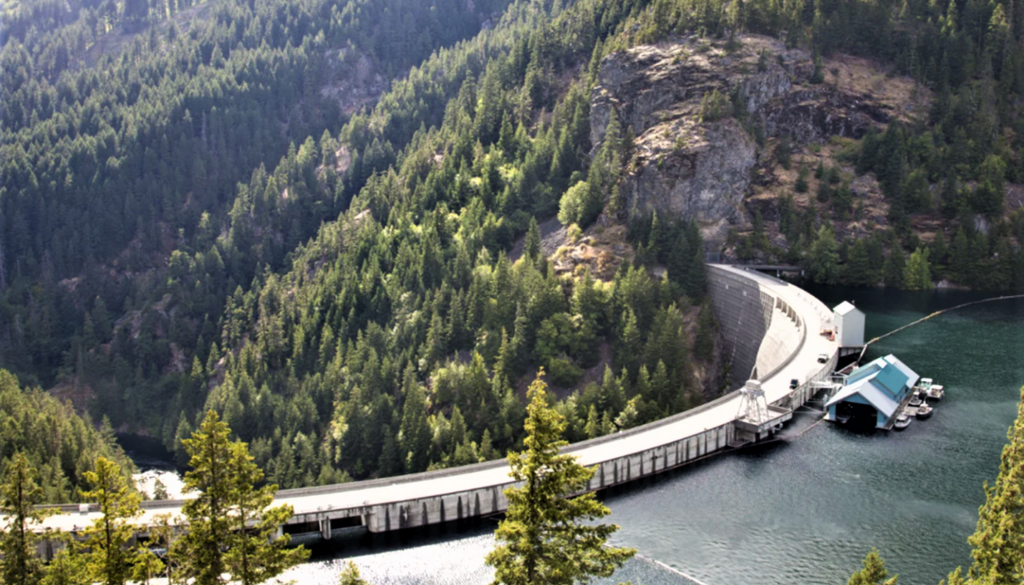A fight for river salmon and the “rights of nature”
By Phil Zahodiakin
A battle for the “rights of nature” is underway in Washington state, as an Indian tribe takes on Seattle over allegations that decades-old hydroelectric dams are contributing to declining salmon populations.
The Sauk-Suiattle Indian Tribe is scheduled to present its case on Tuesday to the Sauk-Suiattle Tribal Court, asking for an affirmation of tribal jurisdiction to hear the litigation. Lawyers representing Seattle are expected to argue that the court lacks jurisdiction beyond the boundaries of the 48-acre Sauk-Suiattle tribal reservation, which lies 80 miles northeast of Seattle.
The dams at issue, the tribe says, are threatening the viability of the salmon species and steelhead trout that spawn in the upper reaches of the Skagit River, a 150-mile waterway draining a watershed in the Cascade Mountains.
The tribe alleges that Seattle violated tribal property rights granted in an 1855 treaty “by unilaterally constructing dams without official notice,” along the waterway.
In its civil complaint, the tribe asks the court to declare that the fish in question possess “inherent rights to exist, flourish, regenerate, and evolve,” including rights to “pure water,” the right to a healthy climate system, and a natural environment free from human-caused global warming impacts. . . .” The salmon have lost spawning and rearing habitat due to the dams, the complaint alleges.
Jack Fiander, a lawyer representing the Sauk-Suiattle Tribe, said that along with the migratory hurdles presented by the dams, the fish are at risk from dioxin discharges from nearby pulp and paper mills. Other stressors include habitat loss and the impacts of climate change.

Some, but not all, types of salmon are listed as endangered, and efforts are underway around the United States to preserve and protect the fish, including in Washington state.
The tribe’s complaint blames some of the declines in salmon population in Washington on three hydroelectric dams built along the Skagit from the 1920s through late 1940s. The dams, which provide 20 percent of Seattle’s electricity, were constructed without “fish ladders” to help the salmon return to their spawning grounds.
The city has rejected the allegations, including any requirement for construction of “fish passage[s]” at the dams.
Legal standing
The “Rights of Nature” doctrine at issue in the tribe’s case is a long-running claim, fueled by advocates seeking protections of important ecosystems. The concept took root after publication of a 1972 article by University of Southern California law professor Christopher Stone titled, “Should Trees Have Standing?” The article spurred a movement built on the idea that nature should enjoy the same rights granted to humans.
In 1972, U.S. Supreme Court Justice William O. Douglas wrote, in a groundbreaking dissent in Sierra Club v. Morton, that “nature’s ecological equilibrium” justifies a grant of legal standing for any environmental features threatened by development.
In 2006, a Pennsylvania borough became the first U.S. municipality to recognize nature as having legal rights, as a means to challenge the land application of sewage sludge. In 2008, Ecuador became the first country to add Rights of Nature to its constitution.
In 2019, the City of Toledo, Ohio, passed a referendum granting rights to Lake Erie, whose waters – frequently starved of oxygen by enormous algal blooms – could be unsafe to touch, much less drink. Even though the referendum passed by a 2-to-1 margin, a judge overruled its enactment on the grounds that the city breached the limits of its authority.
In the Seattle legal fight, the city argues that the Sauk-Suiattle Tribal Court would breach its legal guardrails if it attempted to regulate off-reservation activities.
The tribe asserts in its complaint, however, that the city’s actions have a “direct impact upon the welfare of . . . the Tribe,” pointing out that the affected salmon species are “the most important cultural and sacred food” sustaining the tribal members.




